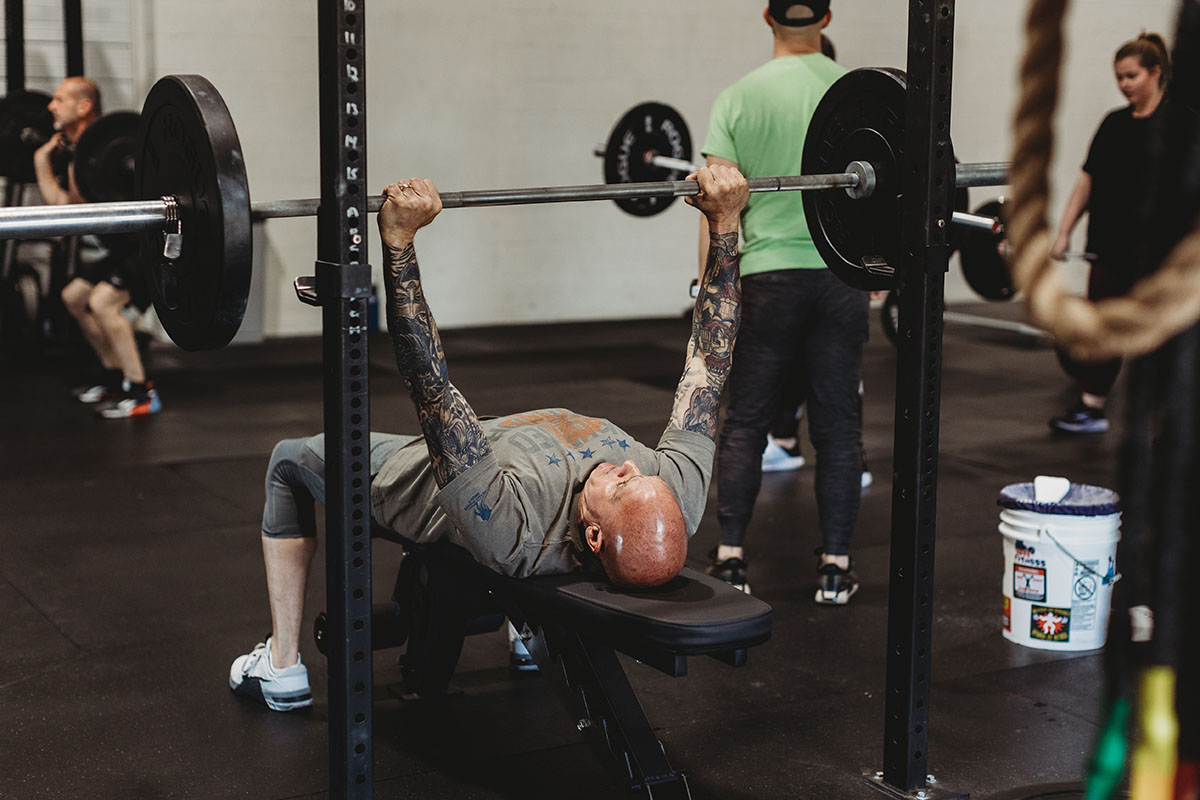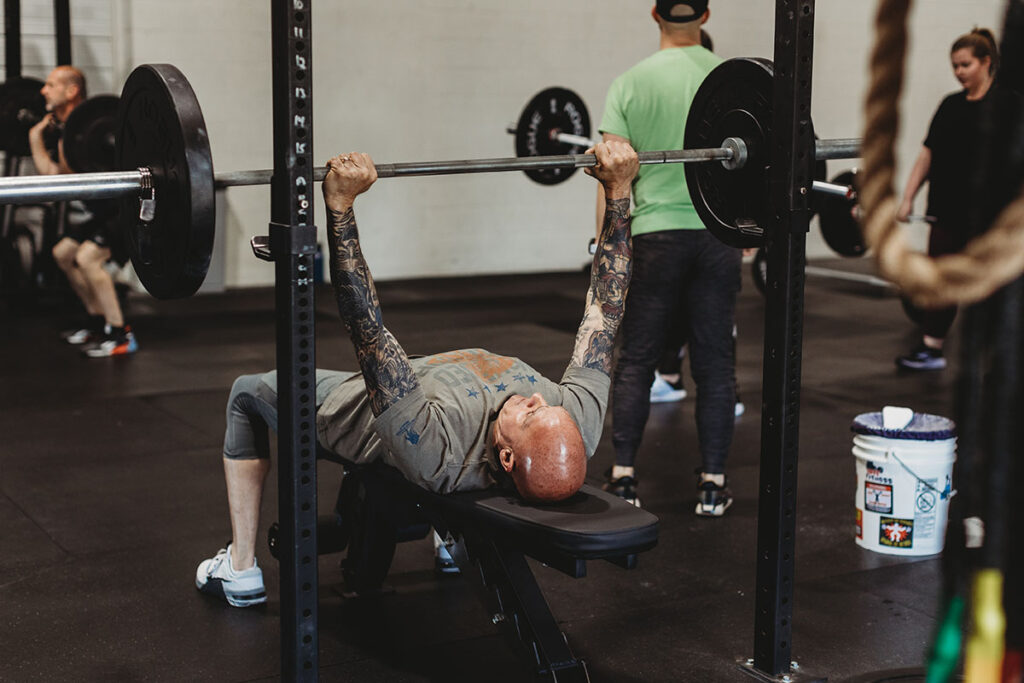
We’ve heard it before. You’re new to the gym and open Wodify (our workout tracking app) to check out the WOD (Workout of the Day), but are met with a bunch of acronyms and words that make no sense.
CrossFit basically has it’s own language, and unless you’re familiar with it, much of it is like reading a foreign language.
We’ve taken the most common CrossFit terms and lingo and broken them down. Whether you’ve been doing CrossFit for years or are brand new to our box, keep reading!
Let’s start with the basics…
Each day, our athletes complete the Workout of the Day (WOD). Our WODs are visible in Wodify each evening at 8pm for the following day, as well as on the Whiteboard, along with any Skill Work and the General Warm-Up and Cool Down.
Our coaches gather everyone to the Whiteboard at the start of class to go over everything we’ll do in the next hour, allowing for any questions to be answered prior to the start of the General Warm-Up.
At the Whiteboard, the coach will discuss the RX and Scaled options for the WOD. During the WOD, if an athlete “goes RX”, this simply means they’ve completed the workout as prescribed, making no changes to the load (weight) or any movements. Completing the workout scaled simply means that movements and/or weight was adjusted to be appropriate for an athlete. This is what makes CrossFit a great option for anyone. Even if there’s something you can’t do (yet), your coach will be able to scale the movement to something you can do while building strength in the muscles you’ll need to eventually perform the movements RX.
Many, if not all, new athletes are unable to RX most workouts. Scaling isn’t only recommended and acceptable in these instances, it’s preferred.
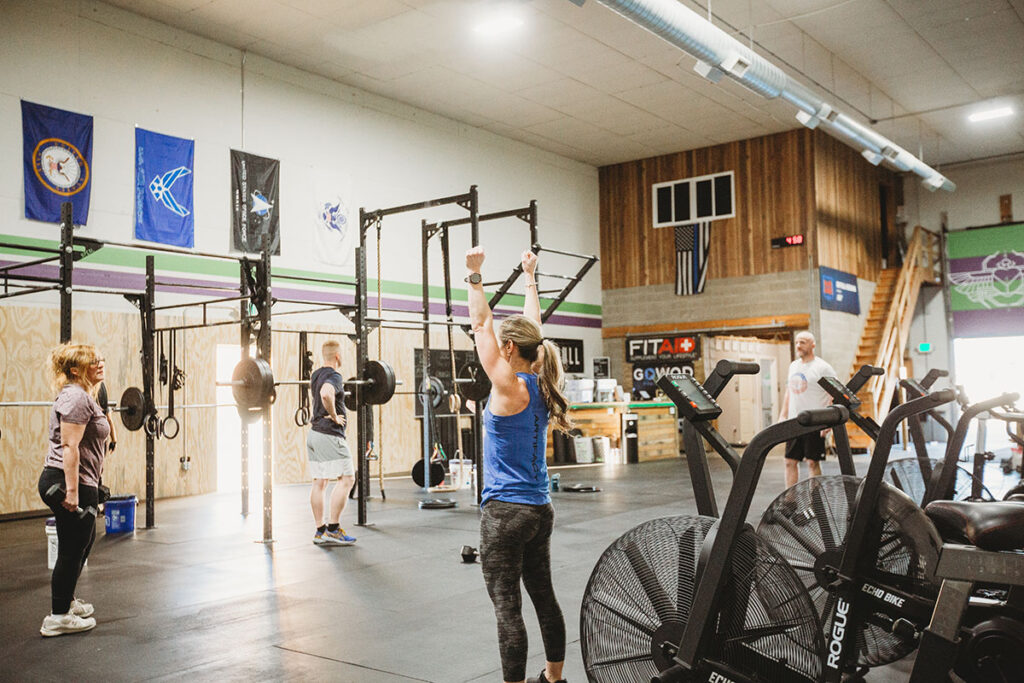
AMRAP, EMOM, RFT, 1RM?! What?
Within each WOD, you’ll typically see additional acronyms that probably make little to no sense if you’re just starting out. We promise you’ll catch on quickly and will soon see these terms and instantly translate in your mind.
An AMRAP is simply an acronym for “As many rounds (and reps) as possible. If an AMRAP 20 is programmed, this just means you’ll do as many rounds and reps of whichever movements are included in the WOD for 20 minutes.
An EMOM, or Every Minute on the Minute, is a workout where you’ll perform an exercise or movement every minute while the clock runs.
For example, an EMOM5: 1 BACK SQUAT + 1 FRONT SQUAT would mean you’d complete 1 back squat and 1 front squat every minute for five minutes.
RFT is an acronym for Rounds for Time, meaning you’ll complete a set number of rounds of a prescribed number of exercises as fast as you can. For example, the workout Helen is:
3 RFT:
- 400 Meter Run
- 21 Kettlebell Swings
- 12 Pull-Ups
An athlete would try to complete 3 rounds of the above workout as fast as possible.
A 1RM is short for One Rep Max, meaning the heaviest load (weight) an athlete is able to lift. For example, if we’re deadlifting in class and the goal is to find a 1RM deadlift, athletes would lift as heavy as they could for one rep.
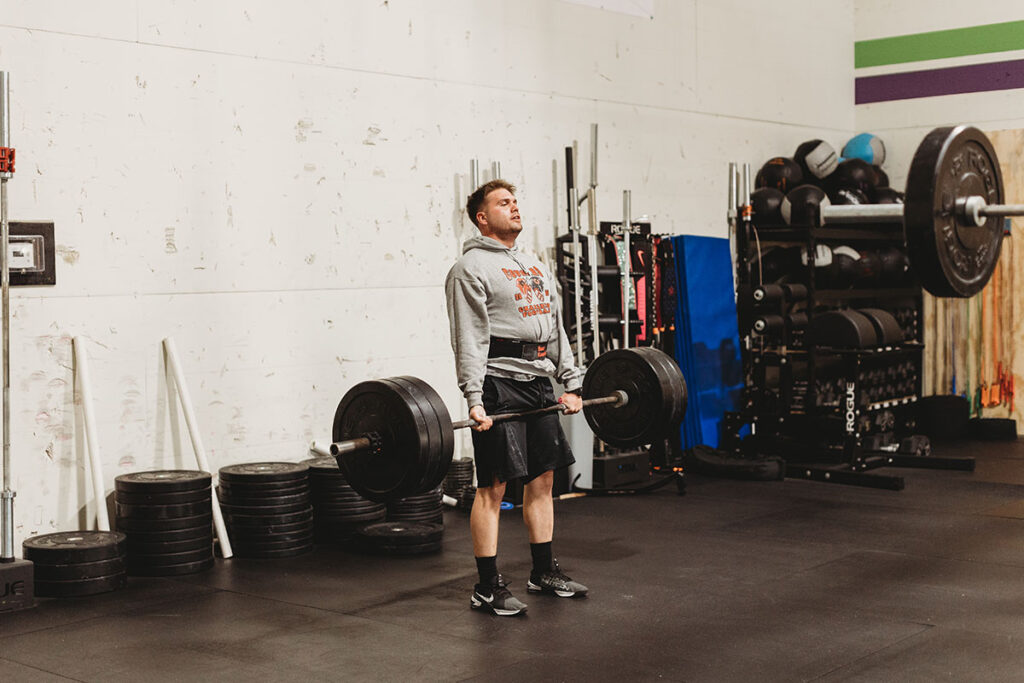
General CrossFit Movement Terminology
Within each WOD, you’ll likely see additional abbreviations and acronyms for most of the movements we regularly perform. Read on to get a quick refresher!
- PC – power clean
- HPC – hang power clean
- PP – push press
- PJ – push jerk
- SDHP – sumo deadlift high pull
- STOH – shoulder to overhead
- FS – front squat
- OHS – overhead squat
- BS – back squat
- DL – deadlift
- MU – muscle up
- BMU – bar muscle up
- RMU – ring muscle up
- HSPU – handstand push up
- SHSPU – strict handstand push up
- T2B – toes to bar
- K2C – knees to chest
- PU – pull-up
- C2B – chest to bar pull-up
- WB – wallballs
- BJ – box jumps
- BBJO – burpee box jump overs
- BJO – box jump overs
- DU – double unders
- SU – single unders
These are some of the more common movement abbreviations you’ll see at the Whiteboard! If you ever come across something you’re unfamiliar with, you can always ask your coach or a fellow athlete that’s been at our box (CrossFit gym) longer than you have!
So, what’s a Hero WOD?
Throughout the year, you’ll see Hero WODs programmed for class. These are some of the most intense workouts you’ll do, but they’re for a purpose, and it’s a great one.
Hero WODs are a special group of CrossFit workouts that are also considered benchmark workouts, which CrossFit uses as a way to compare your progress not only with yourself, but against others.
Most Hero WODs were created as a way to honor fallen soldiers who gave their lives fighting for our freedom. While they are extremely challenging, we do them with all of our ability as a way to remember that even when these brave men and women wanted to stop and give up, they didn’t, and as a way to honor them, we won’t give up or quit either.
One of the most popular Hero WODs we do at CrossFit Artifact twice a year is MURPH, in honor of Navy Lieutenant Michael Murphy, who at the age of 29, was killed in Afghanistan on June 28th, 2005. We complete this challenging workout on Memorial Day and Thanksgiving Day in his memory.
MURPH
- 1 Mile Run
- 100 pull-ups
- 200 push-ups
- 300 air squats
- 1 Mile Run
The Girls
You may have heard other athletes at the box talking about The Girls. These are another special group of benchmark workouts that are intense and used as a way to compare your progress.
As CrossFit’s founder, Greg Glassman said, “I thought that anything that left you flat on your back looking up to the sky asking, ‘what just happened,’ deserved a female name.”
The Original Girls are:
- Angie
- Barbara
- Chelsea
- Diane
- Elizabeth
- Fran
- Grace
- Helen
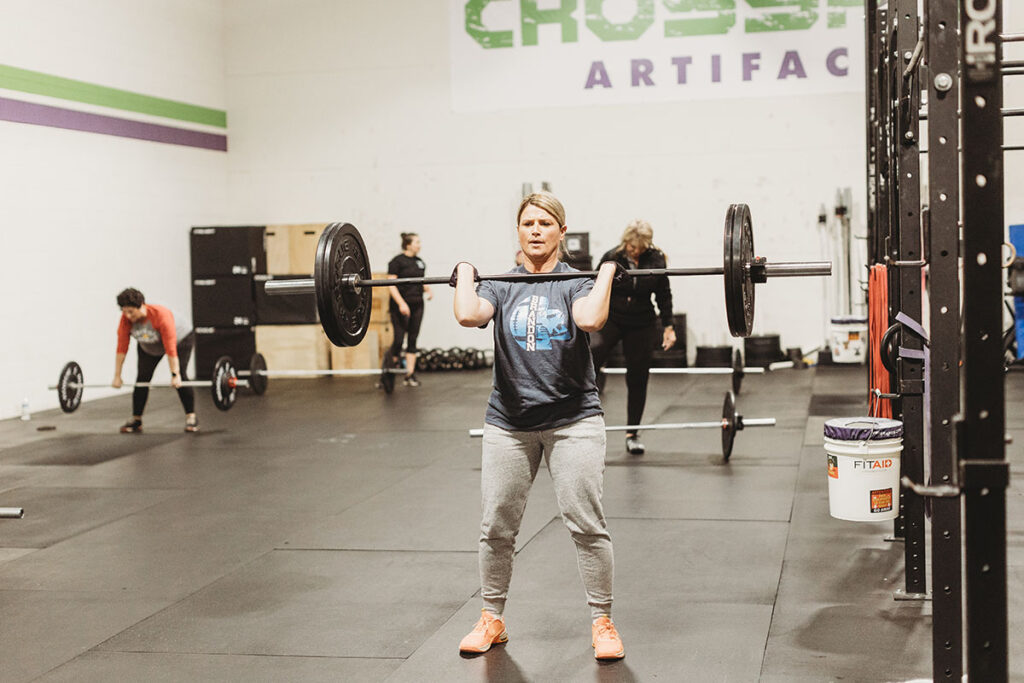
Miscellaneous Training Terms
We’ve covered the main categories of CrossFit terms and lingo. Let’s discuss miscellaneous abbreviations and words that may pop up in your training.
What’s the deal with a PVC pipe? We typically use PVC pipes during our general and specific warm-ups in preparation for barbell movements. Newer athletes may use a PVC pipe throughout movement progressions as well as the workout before they’re ready to advance to a barbell. The PVC pipe is an extremely underrated piece of equipment at the box, as it’s sneakily difficult to hold correct form, especially with this hollow pipe. Never underestimate the PVC pipe!
Once the warm up is over, or an athlete is ready to progress, we’ll incorporate a barbell into your training. A barbell is just a bar made of steel. These can be loaded with bumper plates (a high density rubber plate varying in weight) to increase the total load for the workout.
Some workouts, such as Helen, require the use of a Kettlebell (or KB), which is a cast iron or cast steel weight resembling a ball with a handle. Kettlebells require more joint stabilization when in motion and are a great addition to CrossFit training. Kettlebell swings can be performed a few different ways:
- American KBS (kettlebell swing) – athlete swings the kettlebell to overhead
- Russin KBS (kettlebell swing) – athlete swings the kettlebell to eye level
Kettlebells can also be used for farmer’s carries, goblet squats, snatches, and much more.
Kettlebells are measured in a unit of mass called a Pood, which is equal to 16.38 kilograms, or 36.11 pounds. For example, men’s RX kettlebell is typically 1.5 pood, or 53 pounds.
What about the PR?
At CrossFit Artifact, we like to celebrate every accomplishment, no matter how big or how small. CrossFit as a whole has this same mentality. It’s one of many reasons CrossFit is a fun, community driven sport.
A PR is a Personal Record, or Personal Best for any lift or movement. Whenever an athlete lifts heavier or does more pull-ups, or runs faster or farther than they have before, it’s called a PR.
Whether it’s a half pound heavier or 15 more pull-ups than they were able to do before, it’s celebrated, usually by cheers, shouts, and high fives from everyone else in class.
While we don’t chase PRs (they get fewer and farther between the longer you do CrossFit, simply because as a new athlete, nearly everything is a PR because it’s an entirely new movement).
The biggest takeaway from chasing PRs is that PRs are a direct result of following the process and not just the goal. Staying consistent with your training with the intent of long-term health and wellness will naturally yield results.
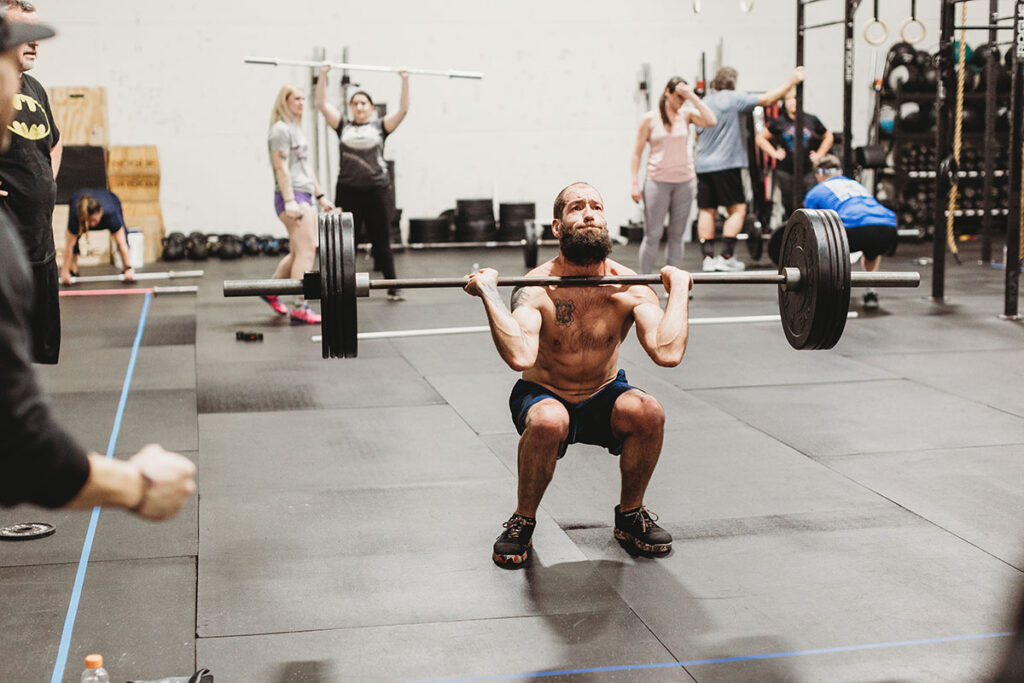
Whether you’re a veteran CrossFitter or brand new to our CrossFit box, we hope this glossary of terms gave you a better understanding of everything you’re likely to see on the Whiteboard or hear in class.
As always, if you have a question about anything, you can always ask one of our coaches!
Do you want to give CrossFit a try? We’d LOVE to have you! Check out a FREE class. We can’t wait to see you here!


